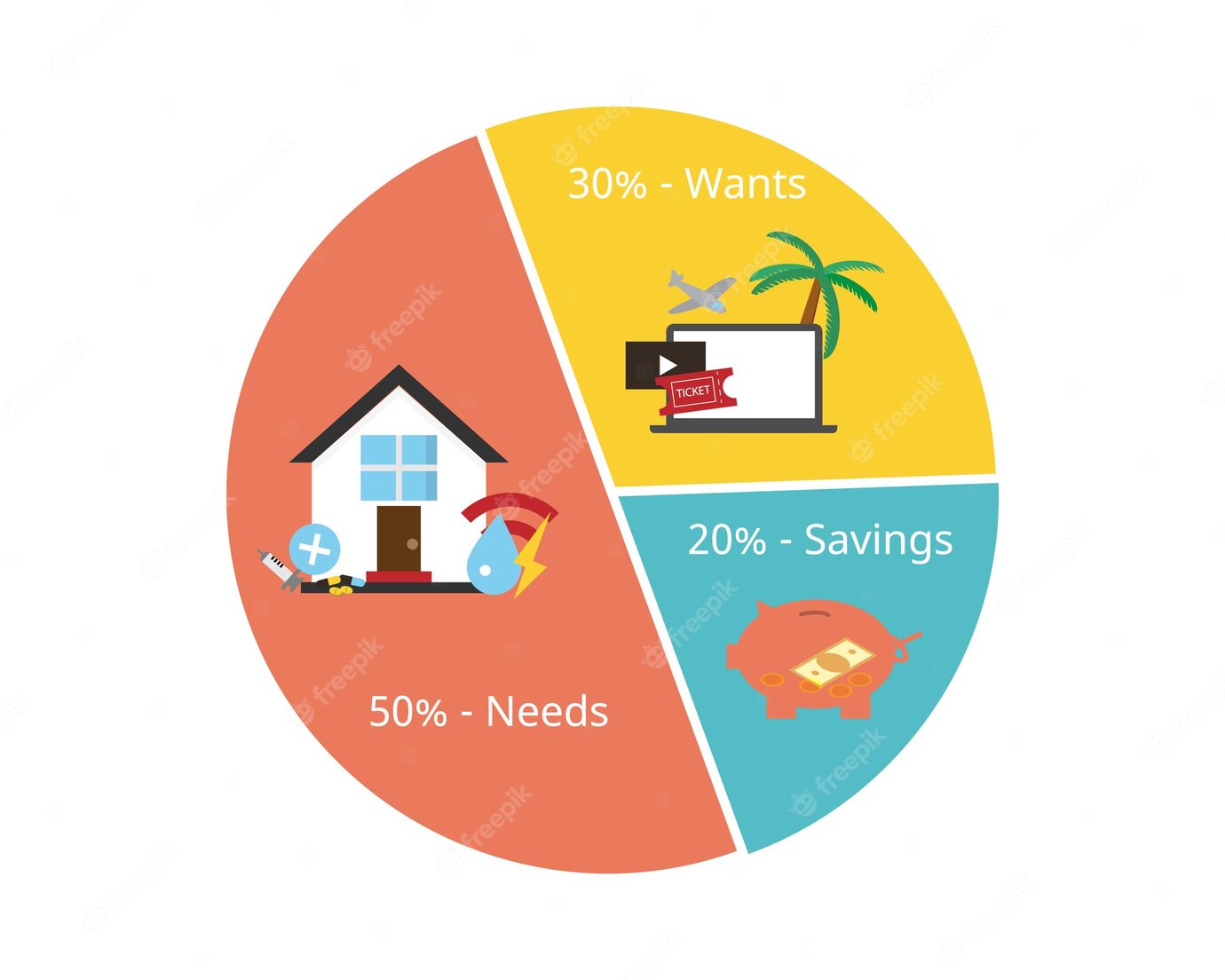Managing your finances can be challenging, especially if you don’t have a clear plan in place. One popular financial rule that can help you get on track is the 50-30-20 rule. This rule is designed to help you allocate your income into three categories: needs, wants, and savings. In this blog post, we’ll take a closer look at the 50-30-20 rule and how it can benefit your financial health.
What is the 50-30-20 Rule?
The 50-30-20 rule is a budgeting method that suggests dividing your income into three categories:
Needs (50%): This category includes essential expenses, such as housing, utilities, groceries, transportation, and other bills. These are expenses that you cannot live without and must be paid every month.
Wants (30%): This category includes non-essential expenses, such as dining out, entertainment, travel, and shopping. These expenses are not necessary for survival, but can make your quality of life better and enhance them.
Savings (20%): This category includes money set aside for emergency savings, retirement, and other long-term goals. This is money that you save for the future and should not be spent on anything else.
How to Use the 50-30-20 Rule?
Here’s how to use the 50-30-20 Rule:
-
Determine your after-tax income: The first step is to figure out how much money you take home after taxes.
-
Allocate 50% to needs: Needs are essential expenses that you must pay every month, such as rent or mortgage, utilities, groceries, transportation, and insurance. Allocate 50% of your after-tax income towards these expenses.
-
Allocate 30% to wants: Wants are non-essential expenses, such as dining out, shopping, travel, entertainment, and hobbies. Allocate 30% of your after-tax income towards these expenses.
-
Allocate 20% to savings and debt repayment: The remaining 20% of your after-tax income should be allocated towards savings and debt repayment. You can use this category to build an emergency fund, save for retirement, pay down debt, or invest.
-
Adjust your budget as needed: If you find that you are overspending in one category or underspending in another, adjust your budget accordingly.
For example, if your after-tax income is Rs. 4,0000 per month, you would allocate Rs. 2,0000 (50%) to needs, Rs. 1,2000 (30%) to wants, and Rs. 8000 (20%) to savings. This distribution will help you manage your expenses with ease and effectiveness.
By following the 50-30-20 rule, you can create a balanced budget that allows you to cover your essential needs, enjoy some of your wants, and save for the future.


50/30/20 rule examples
The 50/30/20 rule is a guideline for personal finance that suggests allocating 50% of your income to needs, 30% to wants, and 20% to savings. Here are some examples of how 50/30/20 rule can be used:
- Monthly Income: Rs. 30,000
-
Needs (50%): Rs. 15,000
- Rent/mortgage: Rs.8,000
- Utilities: Rs.1,500
- Groceries: Rs.3,000
- Transportation: Rs.2,500
-
Wants (30%): Rs.9,000
- Dining out/entertainment: Rs.3000
- Clothing/shopping: Rs.3000
- Travel/vacation: Rs.2000
- Gym membership: Rs.1000
-
Savings (20%): Rs.6000
- Emergency fund: Rs.2000
- Retirement savings: Rs.3000
- Debt repayment: Rs.1000
- Monthly Income: Rs.50,000
-
Needs (50%): Rs.25,000
- Rent/mortgage: Rs.12,000
- Utilities: Rs.2500
- Groceries: Rs.4,000
- Transportation: Rs.6500
-
Wants (30%): Rs.15,000
- Dining out/entertainment: Rs.5000
- Clothing/shopping: Rs.5000
- Travel/vacation: Rs.4000
- Gym membership: Rs.1000
-
Savings (20%): Rs.10,000
- Emergency fund: Rs.3,000
- Retirement savings: Rs.5000
- Debt repayment: Rs.2000
Remember, these examples are just a starting point, and you can adjust the percentages based on your specific circumstances and financial goals.
Benefits of the 50-30-20 Rule
The 50-30-20 rule has several benefits, including:
Simplicity: The 50-30-20 rule is very simple to understand and easy to implement. It provides a clear framework for budgeting and helps you focus on the most important aspects of your finances.
Flexibility: The 50-30-20 rule is flexible and can be adjusted to fit your specific needs and financial situation. You can modify the allocation percentages according to your lifestyle and goals.
Goal setting: The 50-30-20 rule encourages you to save money for your future. By allocating 20% of your income to savings, you can set goals and work towards achieving them.
Is The 50/30/20 Rule Realistic
The 50/30/20 rule can be a helpful guideline for managing your finances, but its realism depends on your individual circumstances and financial goals. Here are some considerations:
-
Flexibility: While the 50/30/20 split is a good starting point, it may not work for everyone. Depending on your financial situation, you can tweak or adjust the allocation percentages to better suit your needs and priorities.
-
Cost of Living: The rule’s feasibility can vary based on the cost of living in your area. If you live in an expensive city, allocating only 50% of your income to needs may be challenging. Conversely, if you have low living expenses, you might be able to allocate more towards savings or wants.
-
Debt and Savings Goals: If you have significant debt or specific savings goals, you may need to modify the rule to allocate a larger portion of your income toward debt repayment or savings.
-
Lifestyle Choices: Your personal choices and values will also influence the rule’s realism. For example, if you prioritize travel or have high discretionary spending, you may need to allocate more than 30% to wants.
Ultimately, the 50/30/20 rule is a guideline, and you should adjust it to fit your unique circumstances. It can provide a framework for budgeting and balancing your expenses, but you have the flexibility to customize it based on your needs and financial objectives.
Conclusion
The 50-30-20 rule is a simple and effective budgeting method that can help you manage your finances and achieve your financial goals. By allocating your income into three categories – needs, wants, and savings – you can create a balanced budget and ensure that you are spending your money in the most efficient way possible. Whether you’re looking to save for a down payment on a house, pay off debt, or build your retirement savings, the 50-30-20 rule can help you get there.
Financial Independence, Retire Early (FIRE) Explained: How It Works
Liked our article ? Subscribe to get weekly updates

